Solanum lycopersicum ‘San Marzano’
Growing ‘San Marzano’ tomatoes at home in the US is a tasty reminder that sometimes it’s just fine – good, in fact – to be second best.
We are never going to be able to duplicate the growing conditions exactly in order to replicate the terroir of this famed Italian plum variety in our backyard gardens. But your homegrown harvest will be delicious nonetheless.
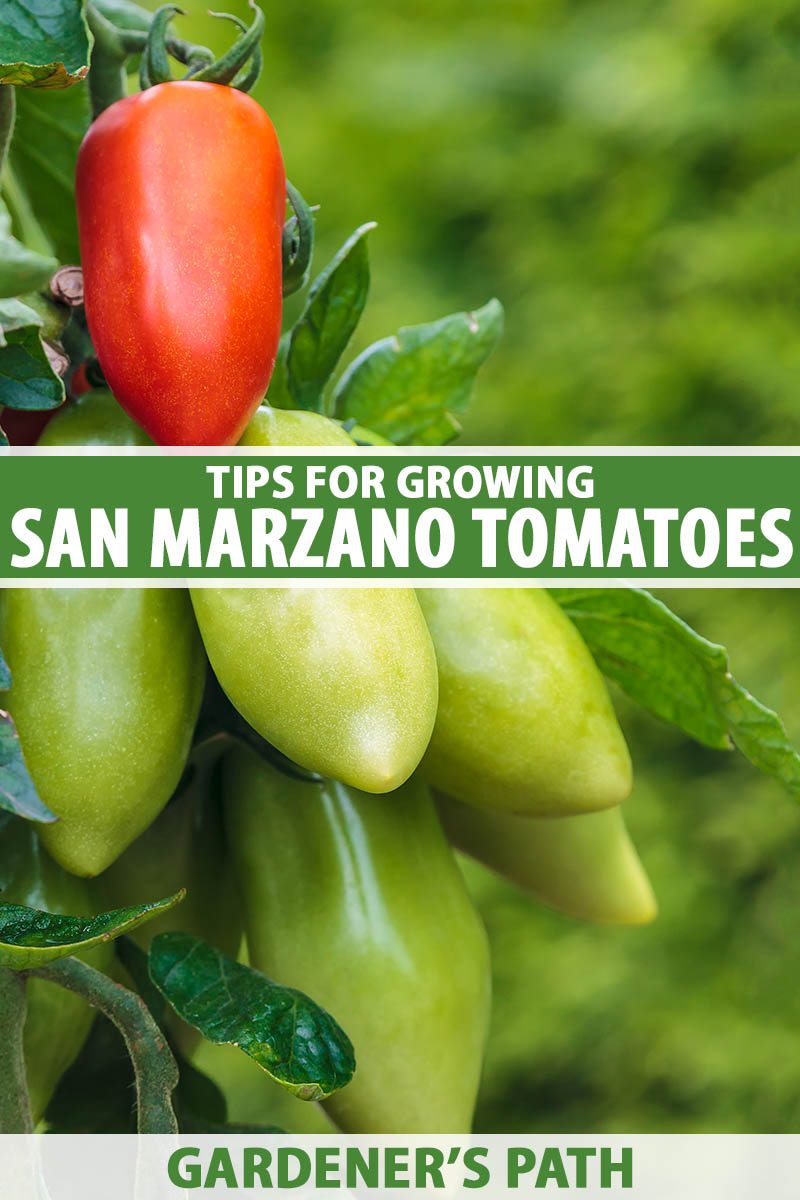
We link to vendors to help you find relevant products. If you buy from one of our links, we may earn a commission.
First cultivated near Naples in southwest Italy’s Campania region, and named for a town there known as San Marzano, the fruits are fleshy, easy to peel, and nearly seedless – all highly favorable traits in a sauce tomato.
This variety developed a unique taste thanks to the local terroir, which we could never hope to imitate. The authentic ‘San Marzano’ gets its distinct flavor from growing in rich volcanic soil created by the eruption of Mount Vesuvius.
Today, the famed paste variety is still farmed in that area of Italy, and commercial production of the authentic article is regulated according to strict standards.
Commercial sale of certified ‘San Marzano’ is regulated and the origins of these tomatoes are verified vigorously. Production standards must be met to proudly boast “Italian San Marzano” on a can or label – paired with a DOP emblem, that is.
In English, this translates to Protected Designation of Origin. And much like champagne and other foods tied to a specific region, certification is conducted by third-party organizations that grant producers the right to loudly proclaim the authenticity of their products.
Over the years, there has been hue and cry over the sad findings that the majority of the canned Italian tomatoes imported to the US and other markets were only claiming to be ‘San Marzano.’
In reality, they were – and often still are – a different variety of plum altogether, grown outside the region with volcanic soil.
This leads us to today’s home gardeners.
The plants and seeds available to us are not the same strains being grown in the acceptable range for certified ‘San Marzano,’ fruit, nor, obviously, are we growing this gold-standard sauce tomato in volcanic soil in most cases.
Despite the fact that we aren’t able to duplicate the one-and-only, the ones we can grow are wonderful for cooking, canning, drying, and making sauce nonetheless, and these tomatoes deserve every inch of garden space that’s available in the summer.
I’m going to share more about this unique Italian variety, including a bit more history and some growing tips that will help you harvest a bumper crop.
Here’s what I’ll cover:
What You’ll Learn
What Are San Marzano Tomatoes?
Usually classified as “paste” or “plum” tomatoes, the ‘San Marzano’ type are three-inch oblong fruits with blunt tips. They aren’t always uniform and the shape can vary slightly, with some of them having more or less pointed ends.
This cultivar is not technically a Roma, though it was one of the parent plants when the USDA’s Agricultural Research Service created the first Roma hybrid in 1955.

All tomatoes originated in Central and South America, and the unique ‘San Marzano’ cultivar hails from an area in Italy that rests in the shadow of Mount Vesuvius.
Originating in an illustrious culinary area near Naples, it’s no wonder ‘San Marzano’ has a rich backstory, but most experts don’t believe the claims that this variety was a gift bestowed on Naples by the King of Peru in the early 18th century.
It’s more likely that tomatoes arrived in southern Italy around the mid-1500s, and that this particular heirloom didn’t emerge until some time in the early 20th century.
This type of tomato usually grows on indeterminate vines, though you may find some ‘San Marzano’ varieties today with a shorter stature. The fruits are borne in clusters of six to eight, which places a heavy burden on the vines.
This heirloom can take anywhere from 75 to 90 days to mature from transplant, and the fruits are a bright, cheery red when they’re ripe. These weigh anywhere from three to six ounces each.
Like other paste types, what makes them so desirable for making sauce, canning, and freezing is the minimal quantity of seeds and slippery gel that they contain, with firm flesh and thin skins.
All these traits make this variety a cinch to peel and cook quickly for thick sauces.
Sound appealing? Read on for a few cautions about choosing this variety to grow in your garden, followed by some tips that will help you harvest maximum yields for cooking and preserving.
How to Grow
You can find complete information on growing and caring for tomatoes in our guide. But I’ll also share some specific advice here that applies to this popular Italian canning variety.
How Many to Plant
When you grow tomatoes with an eye toward making big batches of sauce or preserving them by canning, you’ll need more plants than you might with beefsteak or cherry varieties.
After all, you can pick and eat slicing or tiny fruits a couple at a time to immense satisfaction. But to make a quart of thin tomato sauce requires about five pounds of produce, and you’ll need more per pot or jar for a thicker finished product.

Keep in mind that an average plant – even one that’s been staked and that has received ample water, sun, and food all season – produces about 10 pounds of fruit throughout the summer.
So plan accordingly, and remember that the ripe fruit will only stay fresh for four to seven days on the kitchen counter, whereas putting it in the fridge will destroy the texture.
Since all but one type of ‘San Marzano’ available today are indeterminate, they yield fruits throughout the season, not in a narrow window like most canning types, which are determinate plants.
This means you’ll also need to plan to plant enough that a sizable amount of the fruit will be ripe at the same time, for preserving or making a recipe that requires pounds and pounds.
Or, consider harvesting piecemeal from just a few plants, and then freezing chunks until you have enough for sauce.
Timing
Like most heirlooms, this variety takes a bit longer to yield ripe fruit than most hybrid Romas or other canning tomato favorites. The others take 70 to 80 days, while ‘San Marzano’ might require more like 75 to 90.
That extra week or two can prevent the plants from producing all they’re capable of before the end of the summer.
To offset the extra days in the growing calendar, make sure to transplant nursery starts early in the season to accommodate the lengthier growing schedule.
And when you start seeds, be sure to sow them indoors a good eight weeks ahead of the average last frost date in your area, so they’ll be ready to go early on.
There are plenty of varieties you could choose that produce in a shorter growing window or don’t mind being planted out in early summer, but this isn’t one of them.
If you must contend with a short growing season in a chilly area, consider growing a different variety that matures more quickly but still lends itself to preserving.
‘Sunrise Sauce’ is one example. It’s a determinate hybrid that produces four- to six-ounce fruits starting 57 days from transplant.

Packets of 100 seeds are available from Garden Trends via Amazon.
Also, consider that tomatoes turn red most readily in a temperature range of 68 to 77°F, and the ripening process slows or stops once high temperatures exceed 85°F.
If you live in a place with long, hot, summers, add a couple of weeks to the timeline to account for this potential delay.
Support
Even the less typical “short vine” strain of ‘San Marzano’ will need staking, and all of the vining types demand it.
While the fruits are smaller than the half-pound beefsteaks the neighbors might be growing, they mature in clusters of six to eight, adding a substantial weight for the vines to bear.
Use basket weave, cages, trellises, or stakes. To learn to make your own tomato supports using the Florida weave method, check out our guide.
Container Considerations
Don’t let the fact that the plants produce modestly sized fruits mislead you. While ‘San Marzano’ can grow in containers, they’ll need to be able to hold at least four or five gallons to sustain one plant.
Potted plants also require more frequent watering than those grown in the ground or raised beds since the roots can’t seek water outside the container.
And they’ll need support for the growing vines. You can opt to place a stake or cage in the container, or position the pots near a trellis or fence.
Learn more about the best varieties to grow in pots with tips for acing the process in our guide.
Where to Buy
When you’re lucky enough to have a local nursery that trades in ‘San Marzano’ starts, be sure to shop early! This type is popular with home gardeners and they’re bound to run out quickly in the spring.
Shopping for starts online is another option. Burpee sells live plants as part of a mix-and-match bundle.
And yes, it’s cool if you want to select this popular Italian heirloom for all three plants in the mix!
There are also options for seeds you can sow indoors ahead of late-spring transplanting.
‘San Marzano’ Short Vine is one that matures in 70 to 90 days and grows on vines that reach just a couple of feet long.
The fruits are two to three inches long and weigh five or six ounces each.
This determinate variety is available in various packet sizes and in bulk from True Leaf Market.
More typically, you’ll find seeds for indeterminate ‘San Marzano,’ including 75-seed conventional packets and 150-seed organic packets that are available from Burpee.
Another strain is known as ‘San Marzano Redorta.’ It produces fruits that are similar to the original, but at least twice as big at eight to 10 ounces apiece.
Seeds are available from Sherwood’s Seeds via Walmart.
Harvesting and Preserving
Unlike many varieties of paste tomatoes, most strains of this heirloom are indeterminate, which means they set fruit over the entire summer, rather than in concentrated two- or three-week windows the way determinate varieties do.
As you approach the harvest window – 75 to 90 days after planting – keep an eye on your plants and pick the fruits when they are ripe.

This could leave you with the odd pound or two of fruit – not enough to make a big batch of sauce.
The solution? Chop and freeze a few, following the instructions from our guide.
Your wintertime self will thank you when you pull a taste of summer from the freezer to add to soup or chili.
This is your friendly reminder that ‘San Marzano’ is an ideal choice for sun-dried tomatoes.
Tap into instructions for dehydrating tomatoes here.
It’s also a good choice for making green tomato pickles if the frost arrives early or you need to pick some ahead of ripening. For basic directions, consult this pickling guide on our sister site, Foodal.
Keep in mind that green tomatoes can be used in place of part or all of another quantity of pickling vegetable like summer squash or cucumber.
Or, preserve the green or ripe produce in lacto-fermented salsa. Find the recipe at Foodal.
Cooking Ideas
I imagine you may end up needing only a few suggestions on ways to cook with ‘San Marzano’ tomatoes before you start conducting your own experiments and find that they’re indispensable.
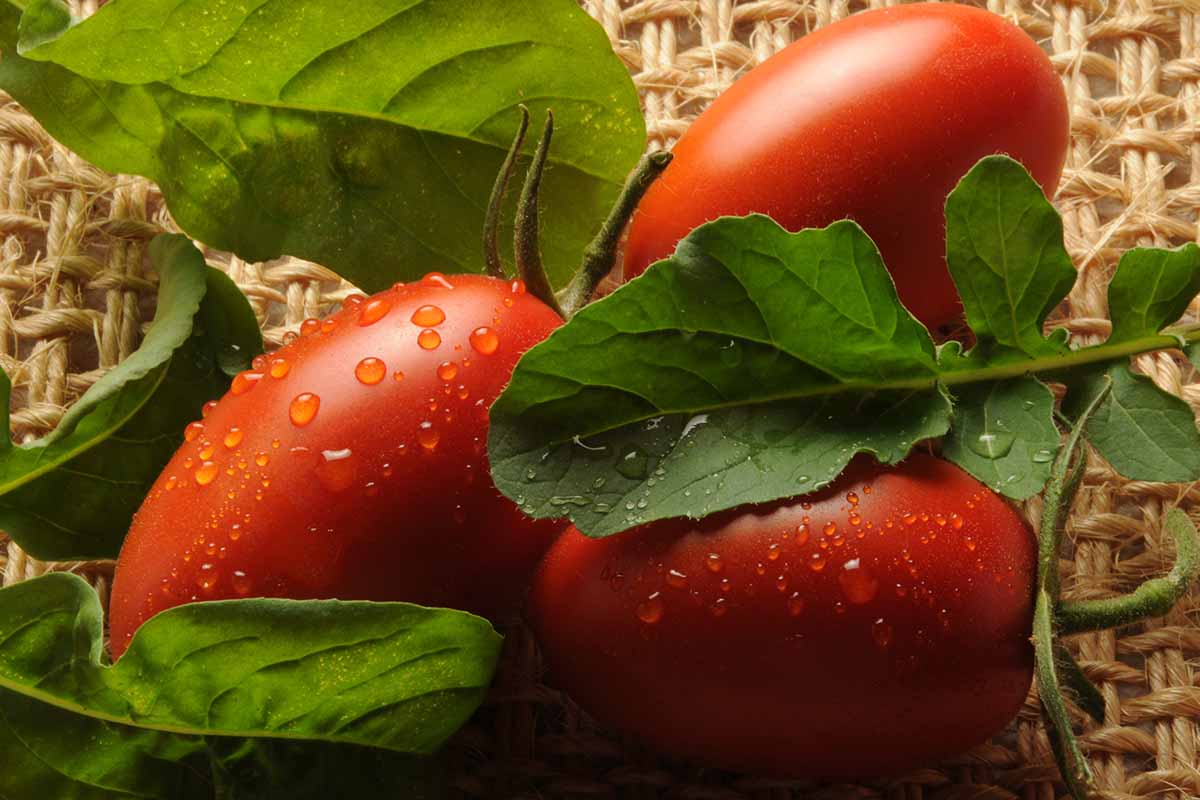
Once you get a taste of the ripe fruits, you’ll quickly realize they can be used the same ways you might enjoy cherry or slicing types – in salads, on sandwiches, and as a delectable marinated side dish.
You can also chop them to top tacos and flatbread pizzas, or to add to fresh salsa.
Of course, there’s a reason they’re known as “paste” or “sauce” tomatoes. The extra-thick walls and the minimal seeds mean these heirlooms are ideal for cooking down to just the right consistency for sauce, or if you’re so inclined, for making homemade tomato paste.
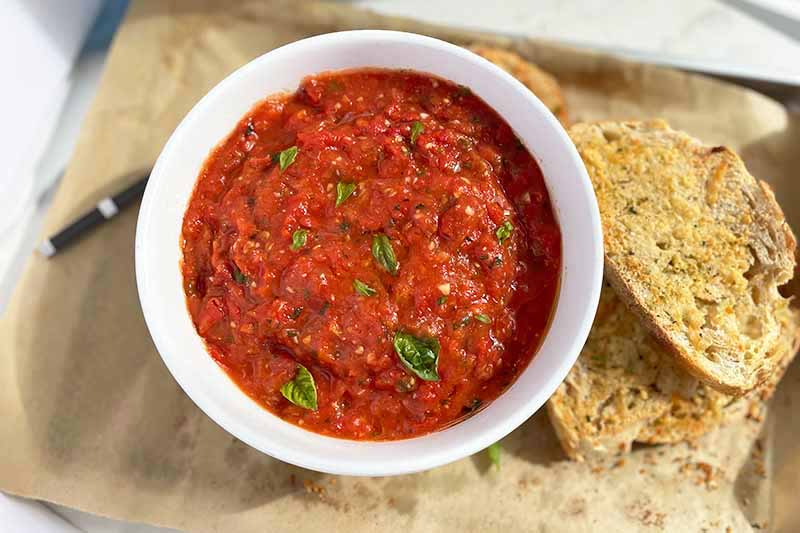
To start, check out Foodal’s oven-roasted tomato sauce recipe for a tasty batch.
For a richer preparation that still highlights the fresh flavor of homegrown ‘San Marzano,’ try Foodal’s tomato cream sauce.
And when you’re ready to attempt a more intricate dish, Foodal’s steak pizzaiola recipe is soul-stirring, hearty Neapolitan fare.

By the time you’ve experienced homemade sauce and recipes that include this star ingredient, as I mentioned before, you’ll probably be ready to develop your own recipes that include these homegrown delights.
I hope you enjoy this culinary journey so much you wish you’d grown more! Next year…
Quick Reference Growing Guide
| Plant Type: | Annual vegetable | Tolerance: | Heat |
| Native To: | Central and South America | Maintenance: | Moderate |
| Hardiness (USDA Zone): | 5-8 | Soil Type: | Fertile soil rich in organic matter |
| Season: | Summer | Soil pH: | 6.0-6.8 |
| Exposure: | Full sun | Soil Drainage: | Well-draining |
| Time to Maturity: | 75-90 days | Companion Planting: | Basil, beans, chives, cucumbers, garlic, lettuce, marigolds, nasturtiums, onions, parsley, peppers |
| Spacing: | 24-36 inches | Avoid Planting With: | Brassicas, corn, dill |
| Planting Depth: | 1/2 inch (seeds), top of seedling 4 inches above soil line (transplants) | Family: | Solanaceae |
| Height: | 6-8 feet (or shorter, depending on variety) | Genus: | Solanum |
| Spread: | 24-36 inches | Species: | Lycopersicum |
| Water Needs: | High | Cultivar | 'San Marzano' |
| Common Pests: | Aphids, cutworms, flea beetles, hornworms, thrips, whiteflies | Common Diseases: | Alternaria stem canker, anthracnose, black mold, blight, blossom end rot, botrytis gray mold, canker, fusarium wilt, leaf spot, mosaic virus, powdery mildew, verticillium wilt |
The Marvelous Don’t Miss San Marzano
I guess I really don’t mind not having soil amended by naturally-occurring volcanic ash available for planting ‘San Marzano’ tomatoes.
But I sure do enjoy the flavor and color of this particular canning variety when it’s time to harvest.
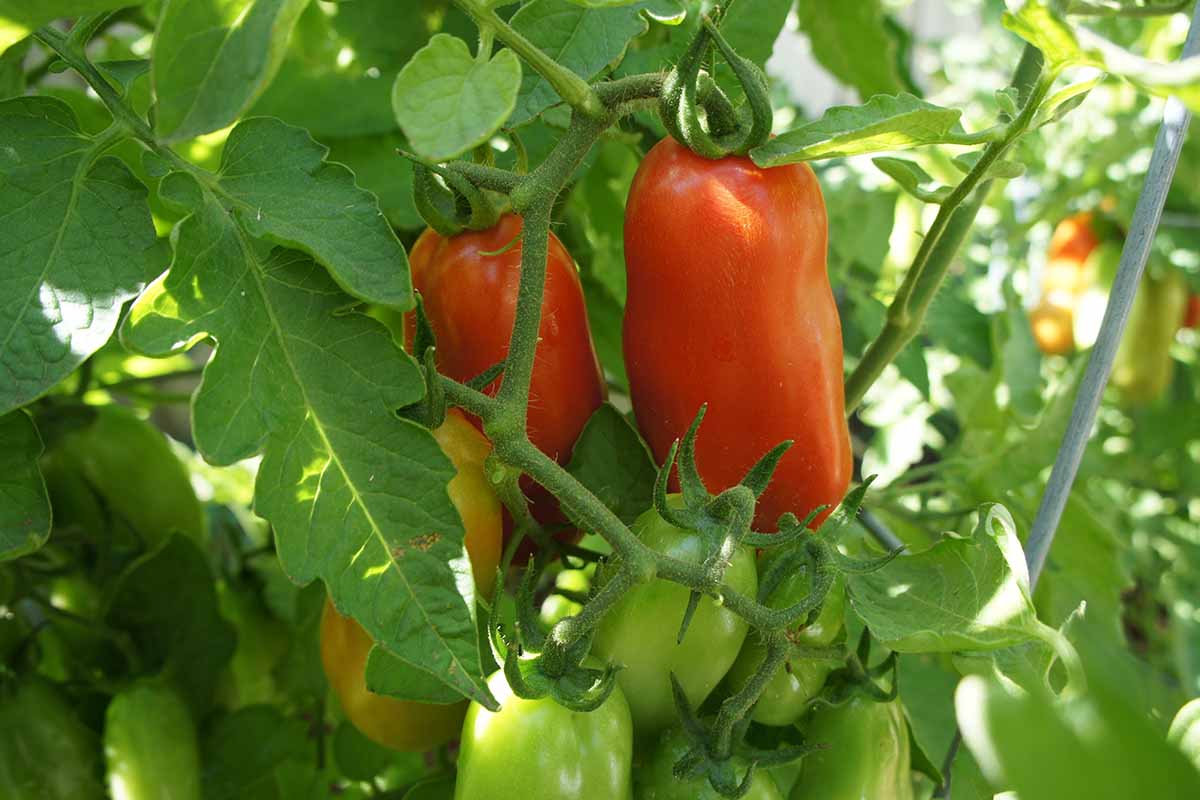
Do you already have experience growing these heirlooms, or additional questions about some aspect of caring for them? We welcome your tips and queries in the comments section below.
And if you found this information valuable, you can tap into more tips in these tomato guides next:
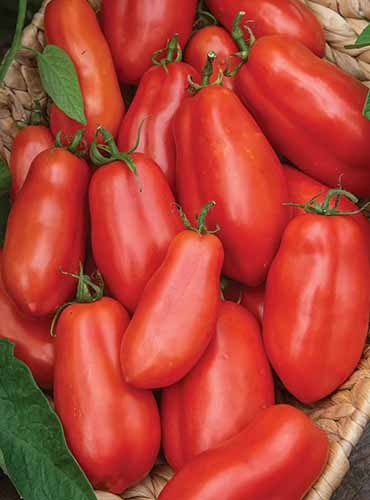
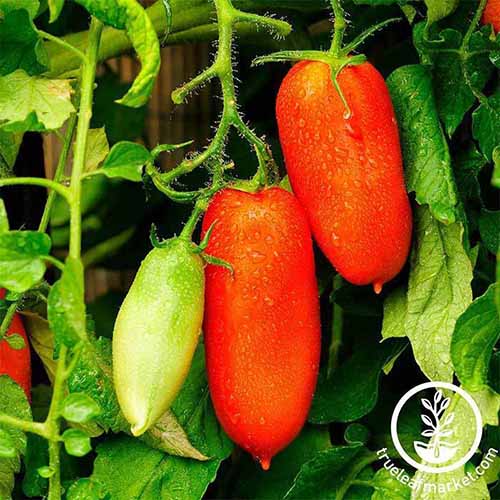


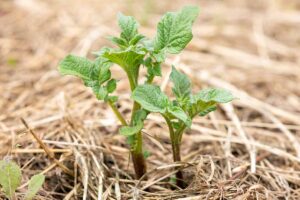
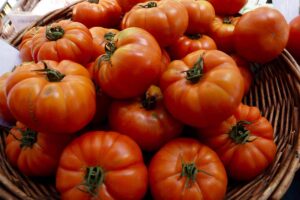
Hello Rose, This is our second year of growing this San Marzanu veriaty. But This Year we have decided to go all out for organic gardening. In our quest to emulate the Mount Vesuvious Vonlanic soil, we have mixed in Azomite from Utah wich is said to volcanic. We seem to be doing good. But my main question is to sucker or not? We suckered up to the first blosum and let the plant go wild from there, constantly needing to refasten. We have 70 of these plants and want maximum production for canning. The question is if we sucker… Read more »
Wow, Walter Merth! I am impressed with your yield and dedication. I can’t wait to hear how the Azomite works out. As for the pruning of those suckers, I think you could pause after removing the ones up to the first blossom. It does require a lot of staking–I know I was amazed at how tall the plants could grow–but you’ll need to do that anyway. If you’re not already doing this, next year, you might want to consider transplanting them deeper in the soil, with only the top three or four inches of true leaves showing above the soil… Read more »
I have six San marzano tomato plants growing wonderfully and producing a lot of fruit. However, I am finding that they have no flavor or scent, even when they are fully ripe. Help! I wanted to make sauce for canning, but seems like there will be no tomato flavor ???
Hello Christina. I’m sorry to hear of your disappointing experience. There could be a few different explanations. The first would be if the plants are getting too much water, especially right before you harvest. This can dilute the flavor. Ideally, you would be giving the plants a couple of inches of water per week while they’re growing, but slow down to about an inch weekly once they set fruits. If they’re growing in containers, you’ll probably need to provide an inch of water twice a week And it’s important for this to be deep watering, at the soil level, the… Read more »